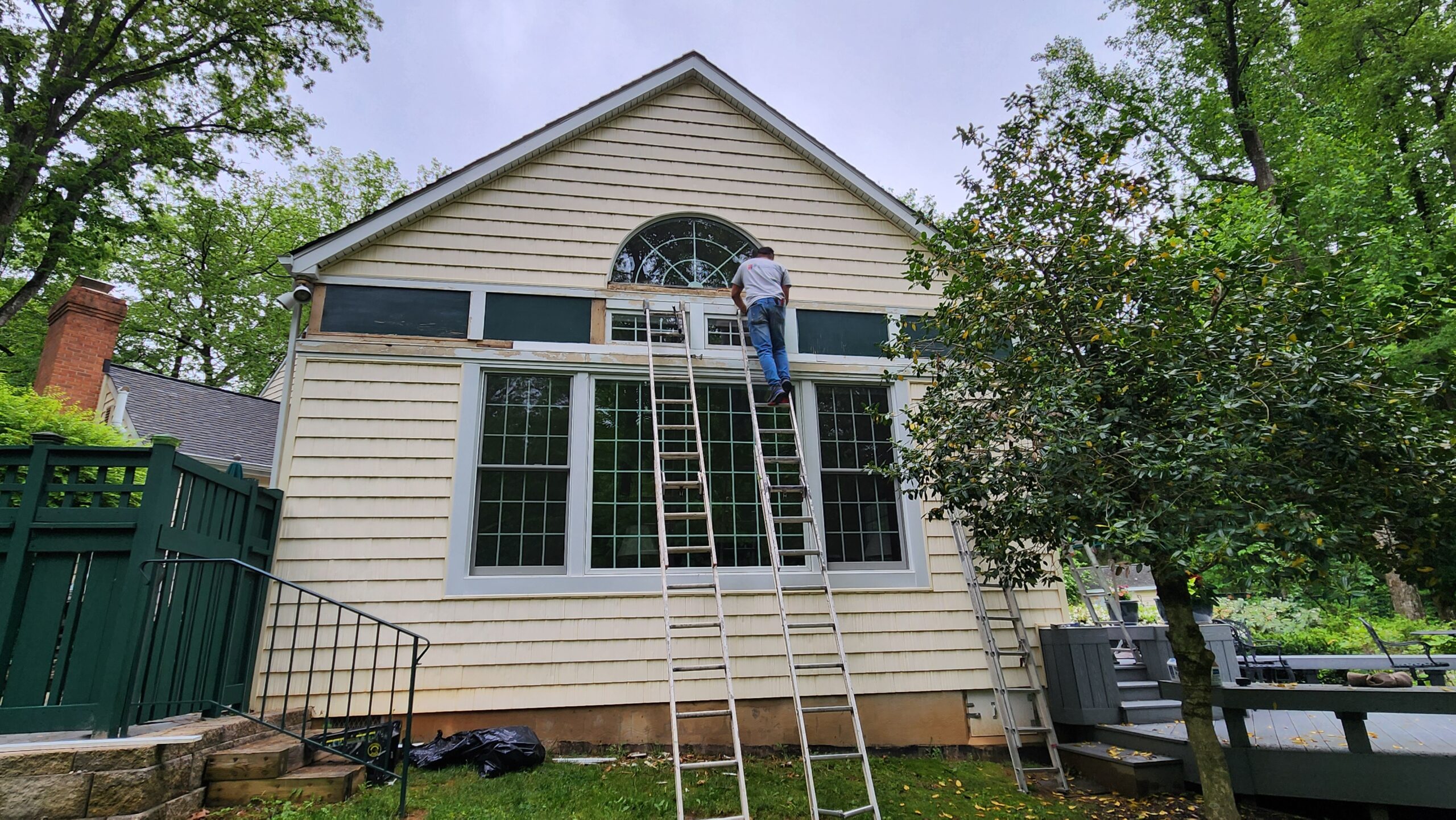If you’ve been staring at your freshly painted wall thinking, “That’s not what I pictured,” you’re not alone. One of the most common reasons people call professional painters is because of painting mistakes that could’ve been avoided with just a bit of prep or know-how.
Whether you’re giving your kitchen a color refresh or tackling your bathroom ceiling with a new finish, small oversights can lead to streaky walls, peeling paint, or the dreaded uneven patches. The good news? Most of these issues are totally preventable.
Let’s talk about the most frequent painting mistakes people make around the house, and how to sidestep them like a pro.
Key Takeaways:
- Skipping prep work can lead to peeling, streaks, and poor adhesion.
- Choosing the wrong paint sheen affects durability and looks.
- Not letting paint fully dry between coats causes cracking.
- Primer is non-negotiable for new drywall, cabinetry, or stained surfaces.
- Using the wrong tools leads to uneven color and visible brush marks.

Top Painting Mistakes to Avoid
If you’re planning to repaint your home in Cockeysville, MD, it’s easy to focus on the fun parts—choosing the perfect color, picking out a new brush or roller, or scrolling through interior design ideas online. But even one small misstep can leave you with blotchy walls, peeling corners, or a ceiling that starts flaking a week later.
Below, we break down the issues we see most often—and how to get it right the first time.
1. Skipping the Prep (Even When the Wall Looks “Fine”)
Walls might look clean enough at a glance, but under the paintbrush? Every little speck of dust, oil, or leftover adhesive tells a different story.
A lot of DIYers jump straight into painting without sanding drywall patches or wiping down surfaces. This leads to poor paint adhesion and streaking.
Here’s what should happen before a single drop of paint hits the wall:
- Wash surfaces with mild soap to remove grease or dust buildup
- Lightly sand glossy or uneven spots with sandpaper
- Fill in nail holes or hairline cracks
- Use painter’s tape on trim, baseboards, and around the ceiling
If you’re not sure whether a primer is necessary, we’ve broken down how many coats of primer are necessary so you don’t waste time or materials.
2. Choosing the Wrong Paint Sheen (Yes, It Matters)
Ever wonder why your bedroom wall reflects more light than you expected? That’s probably a sheen issue.
Paint sheen affects how the light bounces off your wall—and how forgiving the finish is to imperfections. Kitchens, bathrooms, and high-traffic spaces usually need something more durable, like semi-gloss or satin. Meanwhile, flat or matte finishes work better in bedrooms or ceilings where scuffs are rare.
If you’re stuck deciding, this blog on different paint sheens is worth checking out before buying a gallon of the wrong finish.
3. Painting Over Wet or Dirty Walls
Humidity, dust, and leftover moisture from cleaning can sabotage your whole project. Even with high-quality acrylic paint or oil paint, applying it to a damp wall is asking for bubbling, cracking, or uneven drying.
Before you break out your brush or spray painting gear, double-check that:
- Surfaces are completely dry (especially after cleaning or applying primer)
- There’s no lingering dust or pet hair
- The temperature and humidity are working in your favor
Outdoor projects? It’s especially important to plan around weather conditions. We’ve explained all that in our guide on what weather and temperature conditions are suitable for painting the exterior, so you’re not repainting a month later.
4. Going Too Fast with the Roller or Brush
Let’s be real. Once you crack open a new can of paint, it’s tempting to rush through the project.
But slapping paint on too quickly with your brush or roller often leads to missed spots, paint drips, or roller marks. And if you don’t give each coat enough time to dry, expect peeling or uneven coverage.
Slow down, work in sections, and follow the recommended dry times on the label. If you’re using oil or latex-based paint, that drying time could vary based on humidity and airflow. Keep your windows cracked and fans going when needed—but not blasting.
5. Not Using Primer on New or Stained Surfaces
If you’re painting over new drywall, wood trim, or a previously stained ceiling, primer isn’t optional. Skipping it is one of the most common painting mistakes we see in Cockeysville homes.
Primer helps seal the surface, hides color variations, and gives your topcoat something to stick to. It’s especially helpful in rooms like the bathroom or kitchen where moisture is an issue.
Here’s when to never skip primer:
- Painting over bare wood, drywall, or cabinetry
- Covering dark colors with light ones
- Dealing with water stains or smoke damage
- Repainting areas near windows with sun exposure
6. Using the Wrong Tools for the Job
A $2 brush and a high-end acrylic paint don’t mix. Cheap tools can leave visible bristle streaks, shed hairs, or apply uneven layers. Same goes for the wrong nap on your roller—too thick or too thin, and you’re either wasting paint or not covering texture properly.
Here’s what you need for better results:
- Quality angled brush for trim and corners
- Proper nap roller for textured walls or smooth surfaces
- Drop cloths and painter’s tape (and no, paper towels aren’t drop cloths)
- Paint trays and stir sticks
If you’re working with oil paint, use natural bristle brushes. For latex, go with synthetic bristles. These simple choices make a big difference.
7. Underestimating How Much Paint You Need
Guessing how much paint to buy is a recipe for problems—either you’ll run out halfway or have way too much leftover in the garage.
Coverage varies by brand, surface type, and whether you’re using primer. To keep things simple, use our [paint calculator] so you get the right number of gallons for your wall space.
Don’t forget: painting cabinetry, kitchen cabinets, baseboards, or woodworking details usually requires more precision and extra paint due to edges and grooves.
How Painting Mistakes Affect More Than Just Aesthetics
It’s not just about whether your kitchen looks good. Painting mistakes can waste materials, cause unnecessary frustration, and shorten the lifespan of your walls.
Bad prep means your paint won’t stick. The wrong finish can make furniture and shadows stand out awkwardly. And not sealing a bathroom ceiling with primer? That’s a mold risk waiting to happen.
If you’re tired of guessing, getting help from someone who paints rooms day in and day out is worth it.
Our Painting Process and How FR Contractors and Investors, Inc. Can Help
- We don’t overcomplicate it. Our process is simple, clean, and tailored to your home:
- We prep your space from top to bottom, protecting furniture, cabinetry, windows, and flooring
- We clean, patch, sand, and prime wherever needed
- We help you choose the right paint sheen and color for your room or exterior
- We apply high-quality paint with the right brush, roller, or spray system
- We do a final walkthrough with you before calling it complete
- No hidden steps, no mess, no rushed jobs.
We work throughout Ruxton, Towson, MD, and the surrounding areas, and we take pride in helping homeowners avoid stress while getting real results.
Call us at 443-775-2994 for a FREE estimate. Whether you’re refreshing your bedroom, updating your bathroom, or finally finishing that kitchen cabinet redo, FR Contractors and Investors, Inc. is ready when you are.




